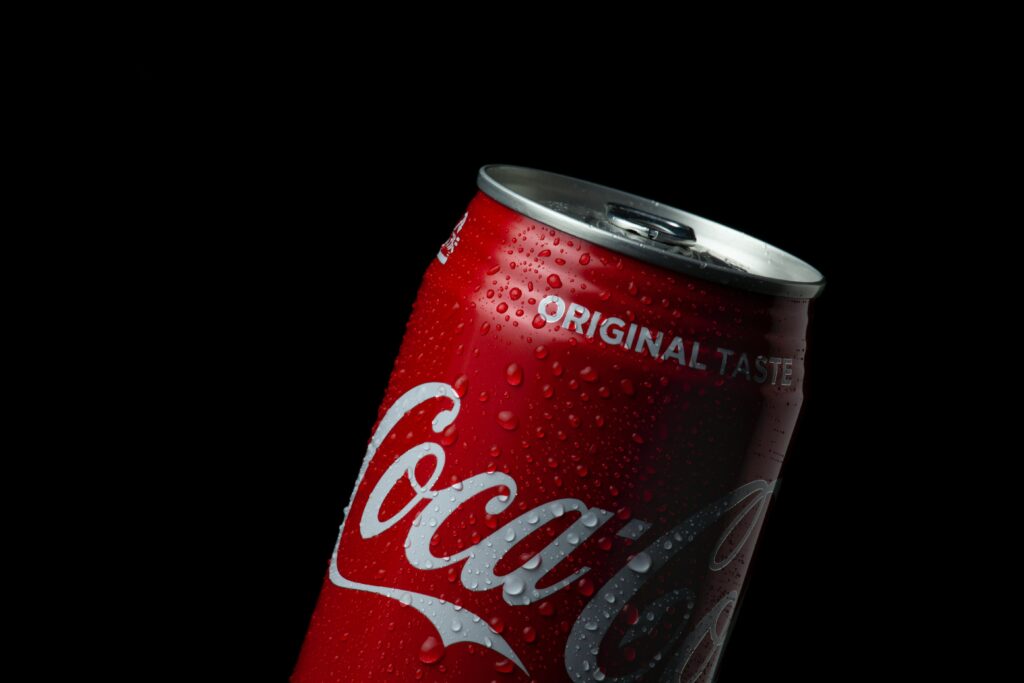Coca-Cola is a global beverage company that operates in over 200 countries. It is one of the most recognizable brands in the world, and its products are being enjoyed by millions of people every day. In this blog post, we will explore the Target market of Coca-Cola and its marketing strategy.

Target Market Of Coca-Cola & Marketing Strategy
The Target Market:
Coca-Cola has a long history of using iconic and memorable advertising campaigns to build its brand and appeal to its target market. The company has a strong focus on nostalgia and tradition, and its marketing often emphasizes the “heritage” of the brand.
Coca-Cola’s target market is broad and varied, as the company’s products appeal to a wide range of consumers. However, Coca-Cola tends to focus its marketing efforts on certain demographic groups, such as young people and families.
One of Coca-Cola’s key target markets is young people. The company has a long history of marketing to young people, and it has had a particularly strong presence on college campuses. Coca-Cola sponsors events, concerts, and other activities that are popular with young people, and it also runs marketing campaigns specifically designed to appeal to this demographic group.
In addition to young people, Coca-Cola also targets families. The company’s products are often marketed as a fun and affordable way for families to spend time together, and Coca-Cola has sponsored events and activities that are geared toward families.
The Marketing Strategy:
Coca-Cola has a diverse and comprehensive marketing strategy that combines various tactics to reach its target market. Some of the key elements of Coca-Cola’s marketing strategy include:
- Advertising: Coca-Cola is known for its iconic and memorable advertising campaigns, which have included slogans such as “The Real Thing” and “Can’t Beat the Feeling.” The company has a strong presence on television, radio, and online, and it also uses print and outdoor advertising to reach its target market.
- Sponsorships: Coca-Cola is a major sponsor of events and activities around the world, including sporting events, concerts, and festivals. The company uses these sponsorships to increase brand awareness and reach its target market.
- Product placement: Coca-Cola has a long history of using product placement to promote its products. The company’s products have appeared in numerous movies and television shows, which helps to increase brand visibility and reach a wider audience.
- Social media: Coca-Cola has a strong presence on social media platforms such as Facebook, Twitter, and Instagram. The company uses these platforms to connect with its target market, promote its products, and engage with consumers.
How Coca-Cola is different than Pepsi in terms of Target Market?
One key difference between Coca-Cola and Pepsi is their target market. Coca-Cola tends to focus its marketing efforts on young people and families, while Pepsi tends to target a slightly younger demographic, including young adults and teenagers. Pepsi has a history of using edgy and innovative marketing campaigns to appeal to this demographic group, such as its “Pepsi Generation” campaign in the 1960s and 1970s.
How Coca-Cola is different than Pepsi in terms of Marketing Strategy?
Another difference between Coca-Cola and Pepsi is their marketing strategies. Coca-Cola has a diverse marketing strategy that combines various tactics, including advertising, sponsorships, product placement, and social media. Pepsi, on the other hand, has a more focused marketing strategy that relies heavily on sponsorships and partnerships. Pepsi has sponsored a number of high-profile events and activities, including sporting events and music festivals, in an effort to increase brand awareness and reach its target market.
Overall, while both Coca-Cola and Pepsi are global beverage companies with a broad target market, they do have some differences in terms of their specific target markets and marketing strategies.
How does the marketing strategy differ in different countries for Coca-Cola?
One of the key factors that influence Coca-Cola’s marketing strategy in different countries is cultural differences. Coca-Cola tailors its marketing campaigns to the cultural norms and values of the specific country or region in which it is operating. For example, the company’s marketing campaigns in Asia may differ from those in Europe or the Americas, due to differences in cultural values and preferences.
In addition to the cultural differences, Coca-Cola also takes into account economic and political factors when developing its marketing strategy in different countries. For example, the company may adjust its marketing efforts based on the income levels and purchasing power of consumers in a particular market.
Conclusion:
In conclusion, Coca-Cola’s target market is broad and varied, but the company tends to focus its marketing efforts on young people and families. Coca-Cola uses a range of tactics, including advertising, sponsorships, product placement, and social media, to reach its target market and promote its products. Despite facing challenges and competition, Coca-Cola remains one of the most successful, infamous, and well-known brands in the world.